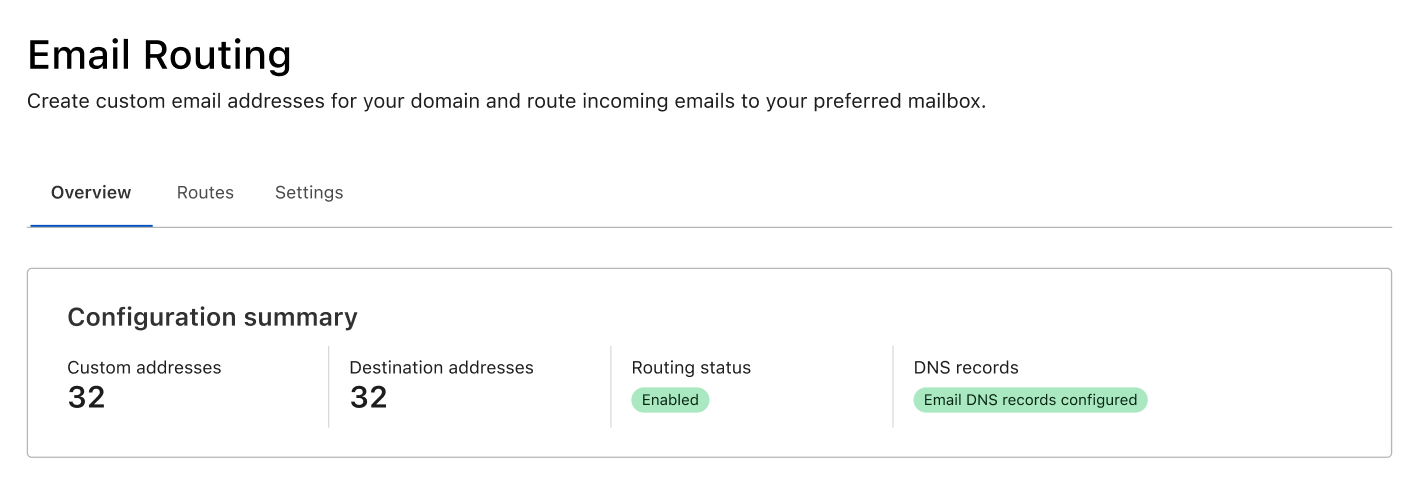Securing Private Cloud Workloads Using Zero Trust Methodologies
The utmost in workload security that fully adheres to zero trust principles can be obtained when using distributed network security agents that are installed at the hypervisor level.Oil And Gas Industry To Get Its Own Stencil Tensor Accelerator
In a post Moore’s Law world, domain specific hardware is becoming more common. …
Oil And Gas Industry To Get Its Own Stencil Tensor Accelerator was written by Jeffrey Burt at The Next Platform.
BGP Policies (Part 5)
At the most basic level, there are only three BGP policies: pushing traffic through a specific exit point; pulling traffic through a specific entry point; preventing a remote AS (more than one AS hop away) from transiting your AS to reach a specific destination. In this series I’m going to discuss different reasons for these kinds of policies, and different ways to implement them in interdomain BGP.
In this post I’m going to cover AS Path Prepending from the perspective of AS65001 in the following network—

Since the length of the AS Path plays a role in choosing which path to use when forwarding traffic towards a given reachable destination, many (if not most) operators prepend the AS Path when advertising routes to a peer. Thus an AS Path of [65001], when advertised towards AS65003, can become [65001,65001] by adding one prepend, [65001,65001,65001] by adding two prepends, etc. Most BGP implementations allow an operator to prepend as many times as they would like, so it is possible to see twenty, thirty, or even higher numbers of prepends.
Note: The usefulness of prepending is generally restricted to around two or three, as the average length of an AS Path in the Continue reading
Understanding Micro-segmentation Policy as Code: How Gitops Will Change Network Security
Micro-segmentation can help you reduce risk by isolating compromised applications and blocking lateral movement attacks.Top Considerations for Enterprise Use of Fixed Wireless Access
Carriers’ broadband deployment plans focus on fiber. But a growing number are also using FWA as well. What do IT managers need to know about the alternative to fiber as carrier decisions factor in your network expansion and enhancement plans?Practical Python For Networking: 5.3 Code Refactoring – Second Example – Video
This lesson walks through the second example of code refactoring. Course files are in a GitHub repository: https://github.com/ericchou1/pp_practical_lessons_1_route_alerts Eric Chou is a network engineer with 20 years of experience, including managing networks at Amazon AWS and Microsoft Azure. He’s the founder of Network Automation Nerds and has written the books Mastering Python Networking and Distributed […]
The post Practical Python For Networking: 5.3 Code Refactoring – Second Example – Video appeared first on Packet Pushers.
NCSA Delta Supercomputer Adopts Slingshot But Forgoes Cray “Shasta” Design
When it comes to supercomputing in academia, the cost of a cluster is almost always an issue and this, coupled with the desire to drive as much compute as possible, drives architectural choices. …
NCSA Delta Supercomputer Adopts Slingshot But Forgoes Cray “Shasta” Design was written by Dylan Martin at The Next Platform.
Email Routing Insights


Have you ever wanted to try a new email service but worried it might lead to you missing any emails? If you have, you’re definitely not alone. Some of us email ourselves to make sure it reaches the correct destination, others don’t rely on a new address for anything serious until they’ve seen it work for a few days. In any case, emails often contain important information, and we need to trust that our emails won’t get lost for any reason.
To help reduce these worries about whether emails are being received and forwarded - and for troubleshooting if needed - we are rolling out a new Overview page to Email Routing. On the Overview tab people now have full visibility into our service and can see exactly how we are routing emails on their behalf.
Routing Status and Metrics
The first thing you will see in the new tab is an at a glance view of the service. This includes the routing status (to know if the service is configured and running), whether the necessary DNS records are configured correctly, and the number of custom and destination addresses on the zone.

Below the configuration summary, you will see more Continue reading
Event-driven remediation with systemd and Red Hat Ansible Automation Platform
Over the many years of working as an engineer and architect with a particular interest in storage, I have learned that donuts and energy drinks can really bring you some joy in trying situations. When it seems that your infrastructure is on fire and you need an exorcist to help you find the ghost in the machine, a humble box of glazed donuts can give you and your team a much-needed break and allow you to refocus.
Now, the issue with this habit is that it might help you in the moment, but over time this can become a real health issue. Configuration drift, technical issues, and technical debt can all have similar effects on your health, increasing your heart rate and causing sleepless nights. Red Hat Ansible Automation Platform can assist you here with not only keeping your infrastructure in check, but also giving your teams the peace of mind that systems are running as they should.
Being able to schedule compliance checks on your systems with Ansible Automation Platform enables you to preserve configuration and system states, and keep them running the way you prefer. But sometimes this is not proactive enough. What if you have Continue reading
Viewing a Certificate Using OpenSSL
I have started taking Ed Harmoush’s Practical TLS course to learn more about TLS and certificates. When learning about TLS, you want to inspect different certificates to see the various fields and see how different organizations use certificates differently. As always, Linux comes with a great set of tools to work with certificates in the form of OpenSSL. In this post, I will show how to download a certificate and discuss some of the fields that are present in the certificate.
To get the certificate, we will use openssl with s_client and connect to a web site. I’m using twitter.com in this example:
openssl s_client -connect twitter.com:443 CONNECTED(00000003) depth=2 C = US, O = DigiCert Inc, OU = www.digicert.com, CN = DigiCert Global Root CA verify return:1 depth=1 C = US, O = DigiCert Inc, CN = DigiCert TLS Hybrid ECC SHA384 2020 CA1 verify return:1 depth=0 C = US, ST = California, L = San Francisco, O = "Twitter, Inc.", CN = twitter.com verify return:1 --- Certificate chain 0 s:C = US, ST = California, L = San Francisco, O = "Twitter, Inc.", CN = twitter.com i:C = US, O = Continue reading
netlab Multi-Platform Custom Configuration Templates
In the Building a BGP Anycast Lab I described how you could use custom configuration templates to extend the netlab functionality.
That example used Cisco IOS… but what if you want to test the same functionality on multiple platforms? netlab provides a nice trick: the custom configuration template could point to a directory with platform-specific templates. Let me show you how that works…
Multi-Platform Custom Configuration Templates in netsim-tools
In the Building a BGP Anycast Lab I described how you could use custom configuration templates to extend the functionality of netsim-tools.
That example used Cisco IOS… but what if you want to test the same functionality on multiple platforms? netsim-tools provides a nice trick: the custom configuration template could point to a directory with platform-specific templates. Let me show you how that works…
Wanted: A Complete – And Heavily Customizable – HPC Software Stack
Sponsored Feature. There are a lot of things that the HPC centers and hyperscalers of the world have in common, and one of them is their attitudes about software. …
Wanted: A Complete – And Heavily Customizable – HPC Software Stack was written by Timothy Prickett Morgan at The Next Platform.
OMG: Hop-by-Hop Path MTU Discovery
Straight from the “Bad Ideas Never Die” (see also RFC 1925 Rule 11) department: Geoff Huston described a proposal to use hop-by-hop IPv6 extension headers to implement Path MTU Discovery. In his words:
It is a rare situation when you can create an outcome from two somewhat broken technologies where the outcome is not also broken.
IETF should put rules in place similar to the ones used by the patent office (Thou Shalt Not Patent Perpetual Motion Machine), but unfortunately we’re way past that point. Back to Geoff:
It appears that the IETF has decided that volume is far easier to achieve than quality. These days, what the IETF is generating as RFCs is pretty much what the IETF accused the OSI folk of producing back then: Nothing more than voluminous paperware about vapourware!
OMG: Hop-by-Hop Path MTU Discovery
Straight from the “Bad Ideas Never Die” (see also RFC 1925 Rule 11) department: Geoff Huston described a proposal to use hop-by-hop IPv6 extension headers to implement Path MTU Discovery. In his words:
It is a rare situation when you can create an outcome from two somewhat broken technologies where the outcome is not also broken.
IETF should put rules in place similar to the ones used by the patent office (Thou Shalt Not Patent Perpetual Motion Machine), but unfortunately we’re way past that point. Back to Geoff:
It appears that the IETF has decided that volume is far easier to achieve than quality. These days, what the IETF is generating as RFCs is pretty much what the IETF accused the OSI folk of producing back then: Nothing more than voluminous paperware about vapourware!